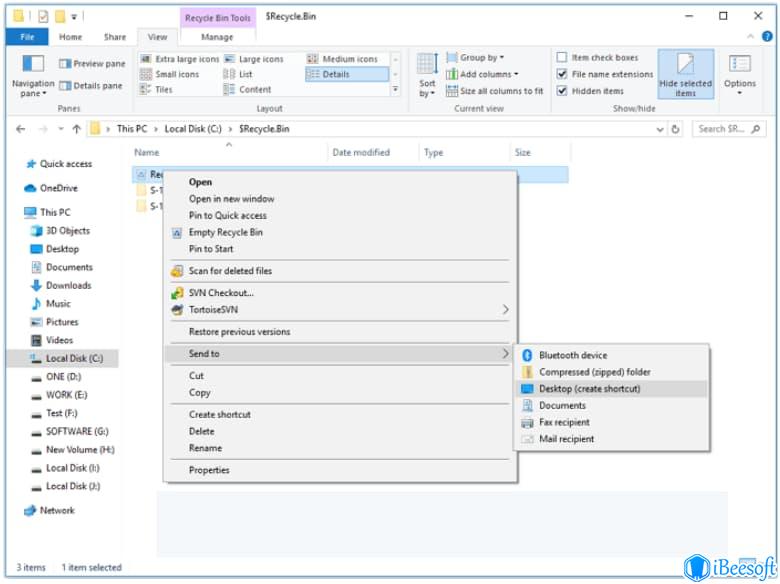
#Hidden recycle bin windows 10 keygen


Mid term, the introduction of alternate file systems like BTRFS might provide better solutions - simply not permitting folder based access to the snapshot and history. in Twonky.ĭoubt there is a universal solution. *Still, it might or might not permit access to the recycle bin when browsing on a per folder base i.e. ) have a different aspect - here the clients talk to a database instead of a file system* might be useful to configure the application not to index data in the recycle bin. Now what-if you have a good player permitting to delete folders or files - and you like to recover it?ĭLNA (or other applications like Plex, YAMJ. Windows has a built-in option to hide it.

So we have a contradictionary situation: Simply because of the NAS can't differentiate what is a player (hiding the recycle bin), and what is a user on a "normal" workstation (with simple access to the recycle bin). To remove or hide the recycle bin icon in Windows 10, you don’t have to change any group policy settings or registry settings. Hidden folders in general should not be interfered with unless you know specifically what you are doing. System Volume Information is used by Windows to hold certain drive level system information and Restore Points. Use the Recycle Bin Icon in the Start Menu. Alternatively, type shell:RecycleBinFolder and then press Enter. Type shell:RecycleBinFolder in the search bar and then press Enter. On Windows Explorer, we can manually type (add) the path to hidden folder name, similar on the OS X shell, and certainly on U**x/Linux. Recycle.bin is the folder files are transferred to when deleted to allow recovery is required. Here’s how you can open the Recycle Bin using the Run command dialog box: Press the Windows key + R to open the Run command dialog box. In either case, neither Windows, U**X/Linux, or Apple users can easily browse to the recycle bin to recover their deleted data, making the complete design somewhat useless - however the media players using these protocols would not immediately see it. visibility.Įither users can easily browse to the folder from Windows (SAMBA), OS X (SMB, AFP), U**x/Linux (NFS, SMB) - requiring a visible folder - or we are going to hide the recycle bin folder (U**x/Linux/AFP/NFS) by adding a leading dot on the folder name - SAMBA does not care about this or make it hidden to SMB clients (hidden attribute flag). What on Earth does Samba have to do with those access methods? Problem is there is no conditional hide available - not on Linux, not on U**x, not on AFP, not on SAMBA - the decision is between simplicity (easy access to the recycle bin, manageability) vs. TonyPh12345 wrote:Accessing the QNAP from the media player via NFS, AFP, and/or DLNA are all options.


 0 kommentar(er)
0 kommentar(er)
